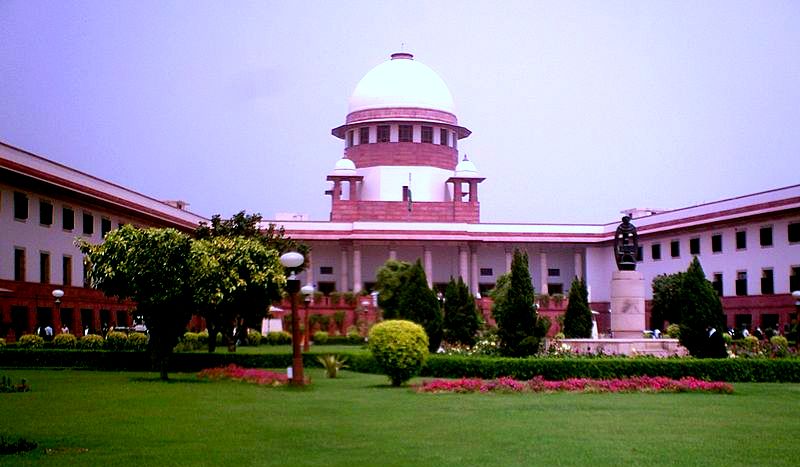News Highlights
The Supreme Court upheld key amendments to the PMLA that gave the government and the Enforcement Directorate (ED) unfettered powers of summons, arrest and raids, and made bail almost impossible while shifting the burden of proving innocence on the accused rather than prosecution.
Key Takeaways
- The verdict came on an extensive challenge against the amendments introduced to the 2002 Act by way of Finance Acts.
- “Money laundering is an offence against the sovereignty and integrity of the country and is no more heinous than the crime of terrorism”, the court noted.
- The apex court termed the PMLA as a law “against the menace of money laundering” and not a law used against rival politicians and dissidents.
Prevention of Money Laundering Act (PMLA)
- The Prevention of Money Laundering Act (PMLA) was enacted by the Indian Parliament in 2002 to prevent money laundering in India.
- There are mainly 3 objectives of PMLA:
- To prevent and control money laundering, the process of converting black money into white
- To confiscate and seize the property obtained from the laundered money.
- To deal with any other issue connected with money laundering in India.
- Dispute redressal:
- The central government appoints the Adjudicating Authority. It decides whether the property attached or seized is involved in money laundering.
- Appellate Tribunal:
- An Appellate Tribunal appointed by the Government is given the power to hear appeals against the orders of the Adjudicating Authority. Orders of the tribunal can be appealed in the appropriate High Court.
- Special Court: Provision for establishing a special court by the Union government under the Prevention of Money Laundering Act, 2002 (PMLA).
Enforcement Directorate
- The origin of this Directorate goes back to 1st May 1956, when an ‘Enforcement Unit’ was formed, in the Department of Economic Affairs, for handling Exchange Control Laws violations under Foreign Exchange Regulation Act, 1947 (FERA ’47).
- In the year 1957, this Unit was renamed ‘Enforcement Directorate.
- Presently, it is part of the Department of Revenue, Ministry of Finance.
- The Directorate has quasi-judicial powers under FEMA to investigate alleged violations of the Exchange Control Laws and Regulations and the authority to impose fines on guilty individuals.
- The Officers of the Directorate are authorised under the PMLA to undertake inquiries to find, provisionally attach/confiscate assets acquired from Scheduled Offences, and arrest and prosecute the Money Launderers.
Functions of Enforcement Directorate under various Acts
- Prevention of Money Laundering Act, 2002:
- The Directorate is empowered to investigate offences of money laundering and to take action/to prosecute persons in cases where it is proved.
- These actions are taken against the proceeds of crime derived from the Scheduled Offences listed under PMLA.
- A total of 156 offences under 28 statutes have been listed as Scheduled Offences under PMLA.
- It has the additional responsibility of extending cooperation to foreign countries for investigations regarding money laundering and for recovering the proceeds of crime held in foreign countries.
- Foreign Exchange Management Act, 1999:
- The Directorate is empowered to investigate violations of the provisions of FEMA.
- Designated authorities of the ED adjudicate these violations, and they are empowered to impose penalties up to three times the sum involved in the contravention.
- Fugitive Economic Offenders Act, 2018:
- Processing cases of fugitive/s from India.
- Conservation of Foreign Exchange and Prevention of Smuggling Activities Act, 1974:
- Sponsor cases of preventive detention w.r.t contraventions of FEMA
Key Powers of the ED under the Prevention of Money Laundering Act
- Power of Investigation
- Sections 48 & 49:
- Officers of the Directorate of Enforcement have been given powers to investigate cases of Money Laundering.
- The officers have also been authorised to initiate proceedings for attachment of property and to launch prosecution in the designated Special Court for the offence of money laundering.
- Sections 48 & 49:
- Powers of ED during Survey
- In section 16 of the PMLA, the Investigating authority during the survey may:
- Place marks of identification on the records inspected by him and make or cause to be made extracts or copies therefrom.
- Make an inventory of any property checked or verified by him.
- Record the statement of any person present in the place which may be useful for, or relevant to, any proceeding under this Act.
- In section 16 of the PMLA, the Investigating authority during the survey may:
- Powers of ED during Search and Seizure
- Section 17 of the PMLA defines the power of search and seizure by the Authorised officer.
- Power to issue Summons
- Section 50; the ED has the power to summon any person whose attendance he considers necessary.
- Attachment of Property
- Section 5: Director or any other officer not below the rank of Deputy Director authorised by the Director has reasons to believe (the reason for such belief to be recorded in writing), based on material in his possession.
Content Source: The Hindu



